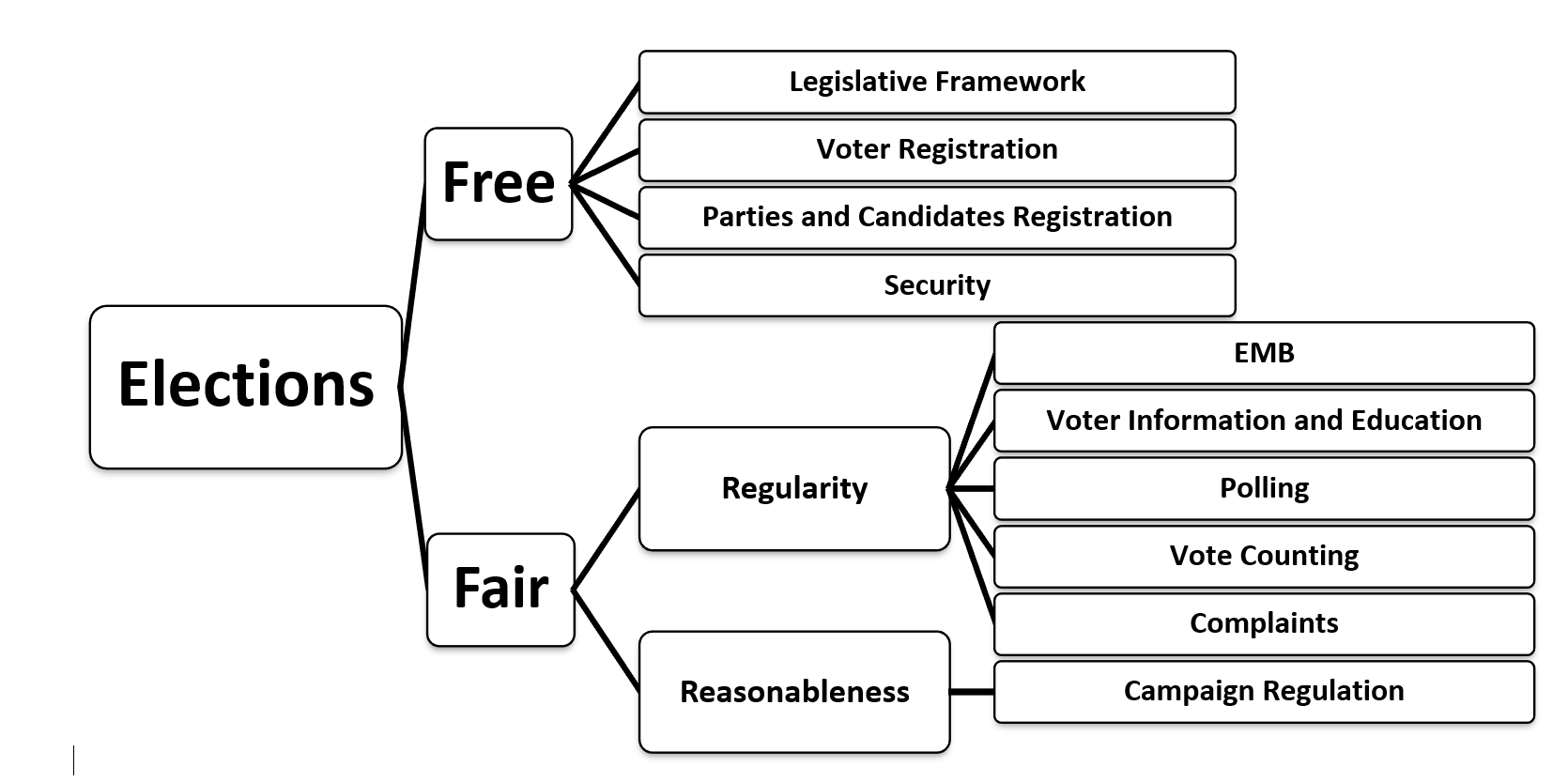
Pubblicato 2023-10-26
Parole chiave
- Quality of Elections,
- Free and Fair Elections,
- Quantitative Index,
- Concepts and Methods
Come citare
Copyright (c) 2023 Marta Regalia, Stefano Rombi

TQuesto lavoro è fornito con la licenza Creative Commons Attribuzione 4.0 Internazionale.
Abstract
The quality of elections is a rapidly growing field of study. There are numerous research methods and analysis techniques to examine it. However, literature still needs to shed full light on one of the main concepts associated with this area of research. Often, scholars refer to the concept of “free and fair elections” without providing a precise definition and identifying the dimensions connected to it. This article aims to help fill this gap by proposing a theoretical and operational definition of free and fair elections. For this purpose, the ten dimensions that make up the concept and the procedures to be followed to arrive at their measurement are described in depth. At the end of the analysis, we propose an index that measures the level of freedom and fairness of the elections.
Riferimenti bibliografici
- Alvarez, R. M., Atkenson, L. R., & Hall, T. E. (2013). Evaluating Elections. A Handbook of Methods and Standards. Cambridge, Cambridge University Press.
- Austin, R., & Tjernstrom, M. (2003). Funding of Political Parties and Election Campaigns - International IDEA Handbook. Stockholm, International Institute for Democracy and Electoral Assistance.
- Bishop, S., & Hoeffler, A. (2016). Free and fair elections: A new database. Journal of Peace Research, 53(4), 608-616.
- Bjornlund, E. C. (2004). Beyond Free and Fair: Monitoring Elections and Building Democracy. Washington D.C, Woodrow Wilson Center Press.
- Boneo, H. (1996). The Future of Election Observation. In Democracy Forum: Report of the ‘Democracy Forum’ in Stockholm, June 12–14, 1996. Stockholm, International Institute for Democracy and Electoral Assistance, 15-21.
- Collier, D., & Mahon, J. (1993). Conceptual “Stretching” Revisited: Adapting Categories in Comparative Analysis. American Political Science Review, 87(4), 845-855.
- Dahl, R. (1971). Polyarchy: Participation and Opposition. New Haven, Yale University Press.
- Dahl, R. (1989). Democracy and Its critics. New Haven, Yale University Press.
- Elklit, J., & Svensson, P. (1997). What makes elections free and fair? Journal of Democracy, 8(3), 32-46.
- Elklit, J., & Reynolds, A. (2005). A framework for the systematic study of election quality. Democratization, 12(2), 147-162
- Gerring, J. (2001). Social Science Methodology. A Criterial Framework, Cambridge, Cambridge University Press.
- Goertz, G. (2003). Social Science Concepts. Princeton, Princeton University Press.
- Goertz, G. (2020). Social Science Concepts and Measurement. Princeton, Princeton University Press.
- Goodwin-Gill, G.S. (2006). Free and fair elections. New Expanded Edition. Geneva, Inter-Parliamentary Union.
- Handley, L. (1998). Boundary Delimitation. Topic Area for Administration and Cost of Elections (ACE) Project, UN, IFES, and IDEA.
- Handley, L., & Grofman, R. (2008). Redistricting in comparative perspective. Oxford, Oxford University Press.
- International IDEA (1997). Code of Conduct, Ethical and Professional Administration of Elections. Stockholm, International Institute for Democracy and Electoral Assistance.
- International IDEA (2002). International Electoral Standards: Guidelines for Reviewing the Legal Framework of Elections. Stockholm, International Institute for Democracy and Electoral Assistance.
- Inter-Parliamentary Union (IPU) (1994), Declaration on Criteria for Free and Fair Elections.
- Knutsen, C. H., Marquardt, K. L., Seim, B., Coppedge, M., Edgell, A., Medzihorsky, J., Pemstein, D., Teorell, J., Gerring, J., & Lindberg, S. I. (2023). Conceptual and Measurement Issues in Assessing Democratic Backsliding, V-Dem Working paper series 2023: 140.
- Lindstädt, R., Proksch, S.-O., & Slapin, J. B. (2018). When Experts Disagree: Response Aggregation and its Consequences in Expert Surveys. Political Science Research and Methods, 1-9. https://doi.org/10.1017/psrm.2018.52
- Little, A. T., & Meng, A. (2023). Measuring Democratic Backsliding. Forthcoming in PS: Political Science & Politics. OSF Preprints. URL: osf.io/n32zk
- Lyons, T. (2002). Post-Conflict Elections: War Termination, Democratization and Demilitarizing Politics - Working Paper No. 20. Institute for Conflict Analysis and Resolution, George Mason University.
- Luís, C. (2021). Free and Fair Elections to Electoral Integrity: Trends, Challenges, and Populism. In Leal Filho, W., Marisa Azul, A., Brandli, L., Lange Salvia, A., Özuyar, P.G., & Wall, T. (Eds) Peace, Justice and Strong Institutions. Encyclopedia of the UN Sustainable Development Goals. Springer, Cham.
- Munck, G. L. (2009). Measuring Democracy, A bridge between scholarship & politics. Baltimore, The Johns Hopkins University Press.
- Norris, P. (2013). The new research agenda studying electoral integrity. Electoral Studies, 32(4), 563-575. https://doi.org/10.1016/j.electstud.2013.07.015.
- Norris, P. (2014). Why Electoral Integrity Matters. New York, Cambridge University Press.
- Norris, P., Frank, R. W., & Martina I Coma, F. (2013). Assessing the Quality of Elections. Journal of Democracy, 24(4), 124-135. https://doi.org/10.1353/jod.2013.0063
- Norris, P., Frank, R. W., & Martina I Coma, F. (2014). The Year in Elections 2013: The World’s Flawed and Failed Contests. The Electoral Integrity Project.
- OSCE (1990), Copenhagen document, https://www.osce.org/files/f/documents/9/c/14304.pdf
- Sartori, G. (1970). Concept Misformation in Comparative Politics. American Political Science Review, 64(4), 1033-1053.
- Sartori, G. (1984). Guidelines for Concept Analysis. In G. Sartori (Ed.), Social Science Concepts: A Systematic Analysis (15-88). Beverly Hills, Sage.

